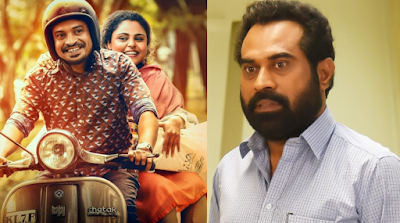The menace of social media
Social
media has become a powerful tool today in the hands of ordinary people. It
gives opportunities to anyone to propagate whatever he wants. As a result, a
lot of falsehood gets peddled as truths, reputations are more marred than made,
and relationships may be ruptured.
I
happened to watch a new Malayalam movie today on the theme of the menace of
social media. I went to watch another movie in fact, but its timing didn’t suit
me and hence I bought tickets for Vikruthi, Mischief.
The
plot is based on a real incident that took place in Kochi recently. A man named
Eldho who has a speech impairment suddenly finds himself in the centre of a
whirlpool because of a picture of his that was taken while utter weariness had
made him fall asleep lying supine on a row of empty seats in the Kochi Metro
train. Eldho had spent the whole night in the hospital where his daughter was
being treated in the Intensive Care Unit for pneumonia. But the social media
picture lampooned him as a drunkard. He lost his job and, worse, his
reputation. The plot hitches a lift on Eldho’s plight and moves elegantly and with
tear-jerking sentimentality to a neat moral lesson.
The
protagonist, played dexterously by Suraj Venjaramoodu, is also named Eldho. Soubin
Shahir who is the mischief-maker plays his role exquisitely too. Their acting
stays with you as you walk out of the theatre. The warp and woof of the plot
are fairly well-woven though the shaft bars of the loom hit you again and again
with blatant moral preaching.
The
message that the movie tries hard to hammer down into the consciousness of the
viewer is relevant and valid. Quite many of us make use of the social media without
thinking of the consequences of our actions there. I have been bombarded with
more falsehood than I can endure on WhatsApp groups particularly. I try my best
to post links to the reality. People seem to take a particular delight in
falsehood than truths. The movie is a remarkable attempt to draw our attention
to this great menace.





From what I understand, the good of social media is far less than the havoc it's wreaking.
ReplyDeleteI would like to see this movie.
I too feel that the negatives far outweigh the positives. I'm not quite pleased with what my students do with the social media.
DeleteWe are in need of Male or Female who wants to sell a k1dneys A , B , O with the sum of $500,000.00 and lives a healthy life. Email: healthc976@ gmailcom
ReplyDeletewhatsapp +91 9945317569